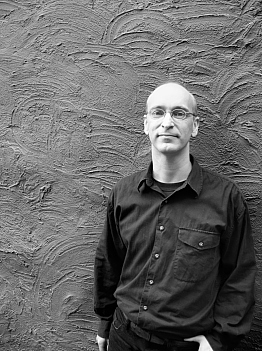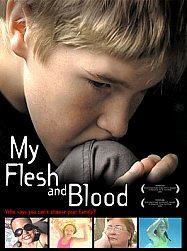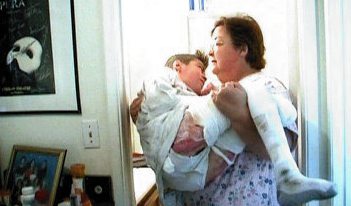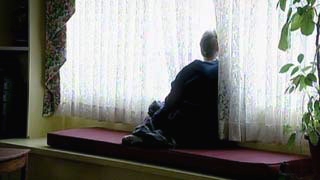|
|
|
Motherhood with Disabilities: |
|
|
|
|
|
|
In a California suburb, Susan Tom is raising a large family of adopted children with disabilities. Anthony suffers from epidermolysis-bullosa, a painful genetic disease that affects the collagen in his skin; Joe has cystic fibrosis and psychological difficulties; Katie is mentally challenged; Xenia (pronounced Kassenya) and Hanna are both genetically legless; Libby is in a wheelchair; Chloe’s limbs do not bend; and Faith suffers from severe burns as the result of a crib fire when she was an infant. Margaret, the eldest at home, had a difficult infancy, including brain surgery; she is fine now, but struggles for autonomy and recognition in a family that depends heavily upon her help. Another child, Susie, had, like Anthony, epidermolysis-bullosa and passed away a couple of years before the film was made. In addition, Susan Tom has two birth sons, Jeremy and Ben, who, along with Emily, Susan’s first adopted daughter, have moved out on their own. She has 12 surviving children, nine of whom live at home. Whether her own or adopted, they are all, as far as Tom is concerned, her flesh and blood. “When I found that I could survive raising four kids,” she says, “then it wasn’t that far of a leap to add another one. If you can then raise five kids, then it’s not that far to go with six; and once you get to six, after that, the noise level doesn’t increase, and you’re cookin’ big anyway, from six to twelve to thirteen kids is not that big of a leap.”
The children’s care requirements are out in the open and, by and large, everyone feels at home because they are at home. “Whether you’ve birthed the kids, or adopted the kids,” says Susan Tom, “whatever they have, is part of who they are, and you accept them for that.” The children we see most in this film are Xenia, Faith, Anthony, Margaret and Joe. Xenia is an expressive and active young adolescent who takes pride in her leglessness and enthusiastically skips rope with runners on her hands. We see her among her friends at school and with a boy she has a crush on. Faith is an unwitting charmer and very smart. She is in grade two but wants to be in grade twelve, she says, “because twelfth grade is hard, and I want to learn hard things.” Though she looks forward to reconstructive surgeries over time, her single major obstacle in life is the disfigurement from the burns she suffered as an infant. Both these girls have the spirit and self-esteem to suggest that they will manage in their lives.
Anthony is a gentle, young man of nineteen who needs extended care to keep his chronic wounds free from infection and to keep him in as little pain as possible. In particular, he requires three-hour bleach bath treatments four times a week and frequent dressing of his wounds. His condition is severe, and his birth mother could not care for him, so he was placed for adoption and became a member of the Tom household. Susan observes with painful irony that she would not wish his condition on anyone, but that were it not for his condition, she would not know him.
Margaret is a young adult and Susan’s primary source of help; she is at the hub of the household, but she also needs her independence. This is a personal conflict and crisis that, in the context of the Tom family, is all but unrecognized, which only makes it worse. “I ... do everything around here,” Margaret says. “I do dinner, do baths, do bedtime.... She feels confident in me to do a good job. It’s ... hard for me to relax sometimes, because I’ve got so much to do, so much that needs to get done.... So it gets tough.”
Joe has cystic fibrosis and occasionally needs to be hospitalized; he is diabetic; and he is diagnosed with attention deficit hyperactivity disorder. He is also deeply conflicted in his allegiances. He is at home in the Tom household, and he is desperate for a father and for a stable connection with his birth-mother, Tammy, a recovering crystal methedrine addict.
In the winter of this film, Tammy marries a new man, Randy, and Joe goes to the wedding in Las Vegas in the company of Susan. Joe, who is in town only that evening, is so excited at the prospect of having a father that when Randy encourages him to see Las Vegas, Joe asks, “Will you take me?” – though it is the man’s wedding night. An understandable oversight, perhaps, for an excited 15- year-old; it is also evidence of a painful need. Joe says later in the car, “Mom.... Now I got a Dad. ... I could talk to him now.” Not much later, Tammy and Randy stop by to tell Joe that they are moving to Oregon, far from his home in California. Joe sobs in Tammy’s arms. Joe is easily pitched into emotional extremes. At times playfully loving and sweet, as during a visit from Susan to the hospital, he can also be aggressive and verbally abusive. He's a live wire, sensitive, needy, and sometimes disturbingly unpredictable. In the film’s most intense sequence, Susan’s mother is coming for a visit, for the first time in several years. Only minutes before she arrives, Joe explodes at a teasing remark from Faith. He is on reasonably good behaviour when Susan and her mother show up (Faith meanwhile finding comfort in Susan’s lap), but that evening he is nobody’s friend, viciously insulting Xenia, and being generally hostile. Possibly he resents his grandmother’s appearance into his house, perhaps because she represents a claim on Susan’s love and attention in competition with his own, or perhaps because she represents one more claim of allegiance on him when he is already divided in his allegiances. With Joe it is often terribly difficult to know just what is going on. Relief occurs when a care worker arrives, a man in his 20s, who takes Joe with him for some time out.
Compounding problems that evening, Margaret arrives home from college frustrated and angry. She is becoming aware of her own needs as a young adult, including her need to be heard and listened to. She is emotional yet manages to say that she does everything around the house and that there is no one to listen to her when she needs attention. As if to prove Margaret’s point, Susan tells her that she is not making sense. Margaret is far from incoherent. Doing her best to compose herself, she asks that she be able to speak without objection, without interruption. Susan has already had to deal with her mother’s arrival and Joe’s outbursts; like an administrator, she offers to talk with Margaret in the morning. Joe, despite his earlier hostilities, is genuinely concerned about Margaret. We see him in the living room doing a breathing treatment, to loosen the phlegm in his lungs. He asks, "Mom, is Margaret Okay?" Susan replies, "Joe, your job is to do your treatment and mind your business." As much as one may sympathize with Susan for being thoroughly overloaded that evening, it is difficult not to sympathize with Joe at this moment. To flesh out the events of that night, we need to go to the DVD extras. Margaret’s frustration had not run its course; before that evening was over, we are told, she exploded. We are also informed that Susan did talk with Margaret the next morning (off camera). These omissions are certainly respectful of Margaret and Susan’s relationship, and of their privacy, but they also obscure a difficult and important part of what is, after all, a documentary; we only learn about these details from the DVD extras, not from the film itself. Susan’s mother tells us, “I made her a mother at a very young age, Susan being the oldest of four children. I gave her so many responsibilities. What I should have done differently was to have told them I loved them, which I never did. … I think Susan was always lonely, always. And she was always trying to find something to fill that void. I think she used the children to fill the void of loneliness.” These are harsh words, no doubt with some truth to them. The iciness in these comments may also give some indication why this woman’s visits are so far and few between – she may not have it in her to be more approaching. There is no father on the scene, no man of the house. Susan’s husband of thirteen years, Phil, left a long time ago. “I really don’t have the energy to build a relationship,” Susan says. “It would be fun to be in love with somebody.... Because you have a lot of excitement with getting to know someone that takes your mind off your troubles. But I don’t have time for that. And it’s not fair to somebody else; and it’s not fair to me. And I seem to attract people who want me to take care of them, and I don’t need to take care of another person right now.” The flip side of that is that Susan is attracted to needy people. She is disarmingly direct, however. In one scene she is looking at pictures of available men on the Internet. “Fat, lots of kids, interesting, sense of humour,” is how she imagines describing herself to a prospective mate. “Get the fat part out of the way, then if they were still interested, they wouldn’t have any illusions.” No matter her shortcomings, we admire and respect Susan Tom. She is a capable and strong woman who, on the whole, knows what she is about. She’s raising these kids; that’s her job and her priority. Moreover, she has welcomed us into her family; she is our host and has little to hide. Though she can be overbearing, she is steady. She is the sole authority figure in the house and so she has to dish out food, as well as responsibility and punishment. She not only has to make arrangements for her kids when they are in hospital, she has to bear the strain of it as well. On one occasion she had three kids in the hospital on the same day. “That was tough,” she says with understatement. Simply put, Susan Tom is successful in her vocation. Her waking energy is devoted to a large family where the children are open, energetic, and expressive and, let it be said, happy.
In an interview available online, director Jonathan Karsh says “when I met Susan and these kids, it really changed my life. I was so taken and shaken by the kids and by Susan, I just wanted to follow up. I was sensationally curious about them and how they operate, how they function with these disabilities, and how Susan does it.”
Karsh has seized on an intrinsically interesting subject, and has brought us close to it, very close. He has given us an intimate portrait complete with turmoil, humour, and sadness. He has let Tom and her kids speak for themselves: we meet them on their own terms. He has structured his film around the seasons and has gracefully interleaved home movie footage with his own. The overall effect is that we are drawn into this film with great sympathy.
At the same time, there are shortcomings to Karsh’s approach.
Karsh has, in effect, two subjects that are melded into one: Susan Tom and Susan
Tom’s family. We see neither clearly because we are too close to both.
Karsh has structured his film intelligently and approached his subject
sympathetically, but he does not stand back sufficiently far
from his double subject to allow us to frame a clear perspective.
By way of comparison, it is helpful to think of Werner Herzog’s documentaries “Little Dieter Needs to Fly” and “Grizzly Man”. In both these films, Herzog presents and portrays his subjects both intimately on their own terms and at the same time with detachment. The result is that unsettling ambiguities come to the surface. In “Little Dieter Needs to Fly,” the dropping of napalm bombs which explode in the Vietnamese jungle communities is a visually and musically beautiful sequence, and the happiness of Dieter at the end of the film is understandable, yet strangely ironic as he walks on a giant field of the U.S. military among hundreds of air force planes designed for attacks. In “Grizzly Man”, a portrayal of Timothy Treadwell as a kind of eco-genius with a tragic lack of perspective gives us a view of the wilderness as a dangerous Disneyland in a world that is woefully out of touch with nature. The final shot in that film, of Treadwell walking along a stream ahead of a couple of grizzlies, underlines the tensions that run through the film. In “My Flesh and Blood”, the disquieting sides of the Tom family remain in the shadows, the way such things remain obscured in most every family. Susan Tom is, first of all, someone whom we must trust, as her children must trust her. Her authority cannot be questioned or challenged, or life under the Tom roof would fall apart. Tom is competently and solidly at the helm in her family; still, it is fair to ask what sorts of burdens having a single person in charge puts on a household – first on the single parent, and then on the other members of the household who have no one else to turn to. We are in a world starved for male role modeling to which Joe’s reaction to his step-father Randy attests. As tremendous as it is to see Susan Tom manage so well with the extraordinary burdens of her family, it is reasonable to wonder if a household of growing and adolescent children might benefit by the commitment of more than one adult where one of them is not one of the children, as in the case of Margaret. The point here is not to judge or fault Susan Tom, certainly not to feel sorry for her, but to raise questions. One has the feeling with “My Flesh and Blood” that it is indiscreet, or impolite, to ask these sorts of questions. It should not be. Problems of absent fathers, of controlling mothers, the complexities and demands of mother-daughter relationships, and of mother-son relationships – these are some of the issues both perennial and contemporary that are reflected in this film but only barely, if ever, addressed.
In the same interview, Karsh is asked “Why are all the interviews with the family, with no outside perspectives?” “I think it just seemed extraneous,” he says. “We shot a lot of outside perspective and I just felt like they were saying the same things that an audience would say. And the outside perspective should really come from you, the audience member watching the family, as opposed to watching somebody watching them.” His answer is disingenuous. “My Flesh and Blood” follows the Toms from the fall of one year to the summer of the next. In fact, the film crew spent a year with the Toms, beginning with a three-month cross-country road trip, footage of which is available as a DVD extra. The road trip footage includes perspectives from other people that is unforced and unsolicited, ranging from admiration, to astonishment, to heartfelt emotion. These outside perspectives are of interest, for two reasons. One is their variety; not everyone will have the same response to the Tom family; the second is that it is interesting to see how people meeting the family view them as opposed to people sitting in a cinema or watching the film at home. Karsh says that he omitted the road trip footage from the final cut of the film ”because it was basically home movies and lacked a tone or story”. For the reasons just given, and for the contrast it provides with the Toms’ home life, it might well have been included.
Outside perspectives, however, do not take us far enough. There is one very important perspective that is missing: Karsh’s own. A director’s understanding of his subject as revealed in a film provides one perspective on that subject, inviting others. Herzog and other documentarians – for instance, Agnès Varda (“The Gleaners and I”) and Errol Morris (“Mr. Death: The Rise and Fall of Fred A. Leuchter, Jr.”) – bring us close to their subjects while, at the same time, interpreting them with their own distinctive approaches to filmmaking. Karsh has brought us close to his subject, but lacks a distinctive critical care and focus such as we find in these other filmmakers. “My Flesh and Blood” is a popular film that has won awards and received a great deal of acclaim. Its power comes in large measure from its powerful subject, which is this unusual and remarkable family, with this unusual and remarkable person at the helm. Groceries have to be bought, laundry has to get done, Anthony needs his baths, the kids go to school, they fight, Xenia has a boyfriend and gets teased, Halloween comes around and everyone dresses up. So much about this family is ordinary – their strife is family strife; their fun is family fun. And at the very start of the film, Joe worries out loud that he may kill one of his sisters. He feels out of place in the house, much as he has his place there, and longs to be with his birth mother, and to have a father. He is torn between his attachments, and does not have the resources to overcome the conflict. Margaret, without whom the Tom household would grind to a halt, is left painfully trying to resolve her own needs for independence and, moreover, her need to be heard.
The Toms are a remarkable group of people, and
the children’s disabilities are taken at face value – something we can all learn
from. There is, however, much that goes unexplored in this film. While the
director, Jonathan Karsh, has found a great subject and presented it with
sympathy, he fails to bring to the subject enough of his own vision and
understanding. |
|
Note: For many years, Lois Siegel taught at John Abbott College
(Montreal). |
|
|
|
|
|
|













